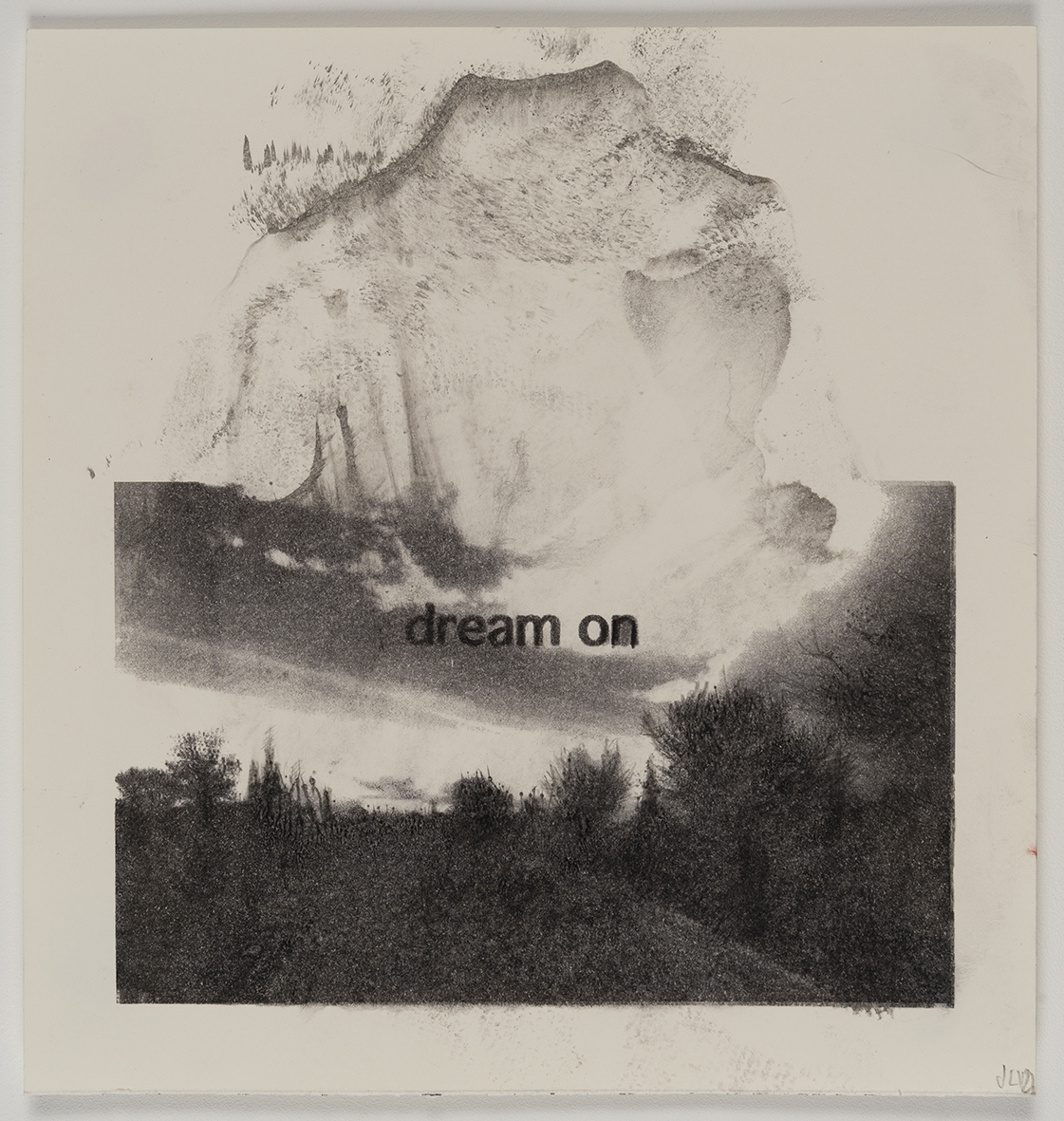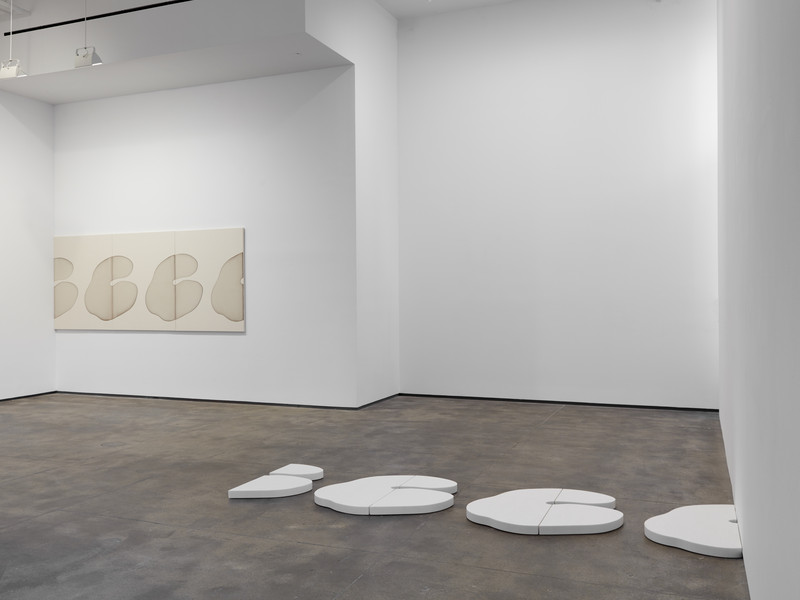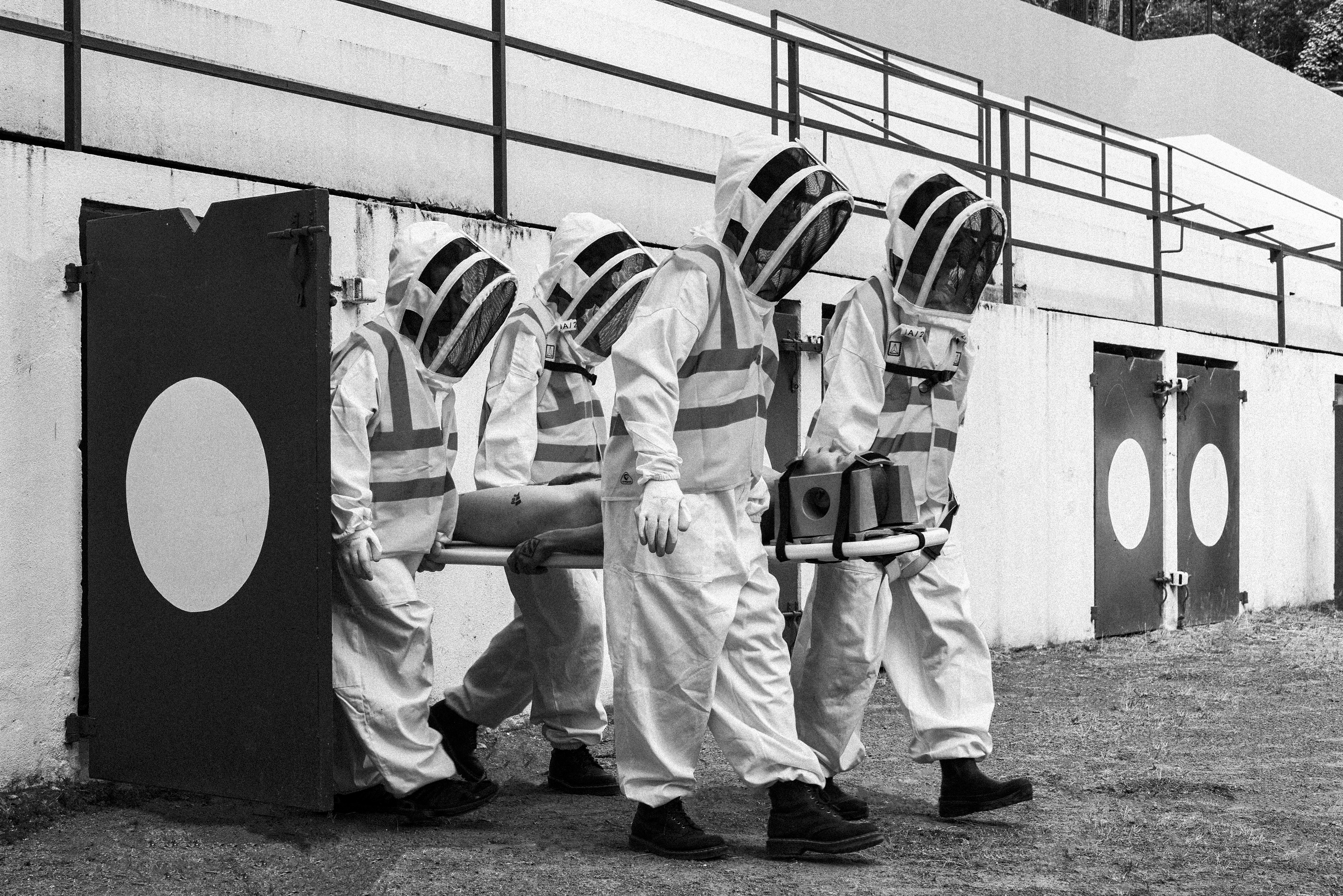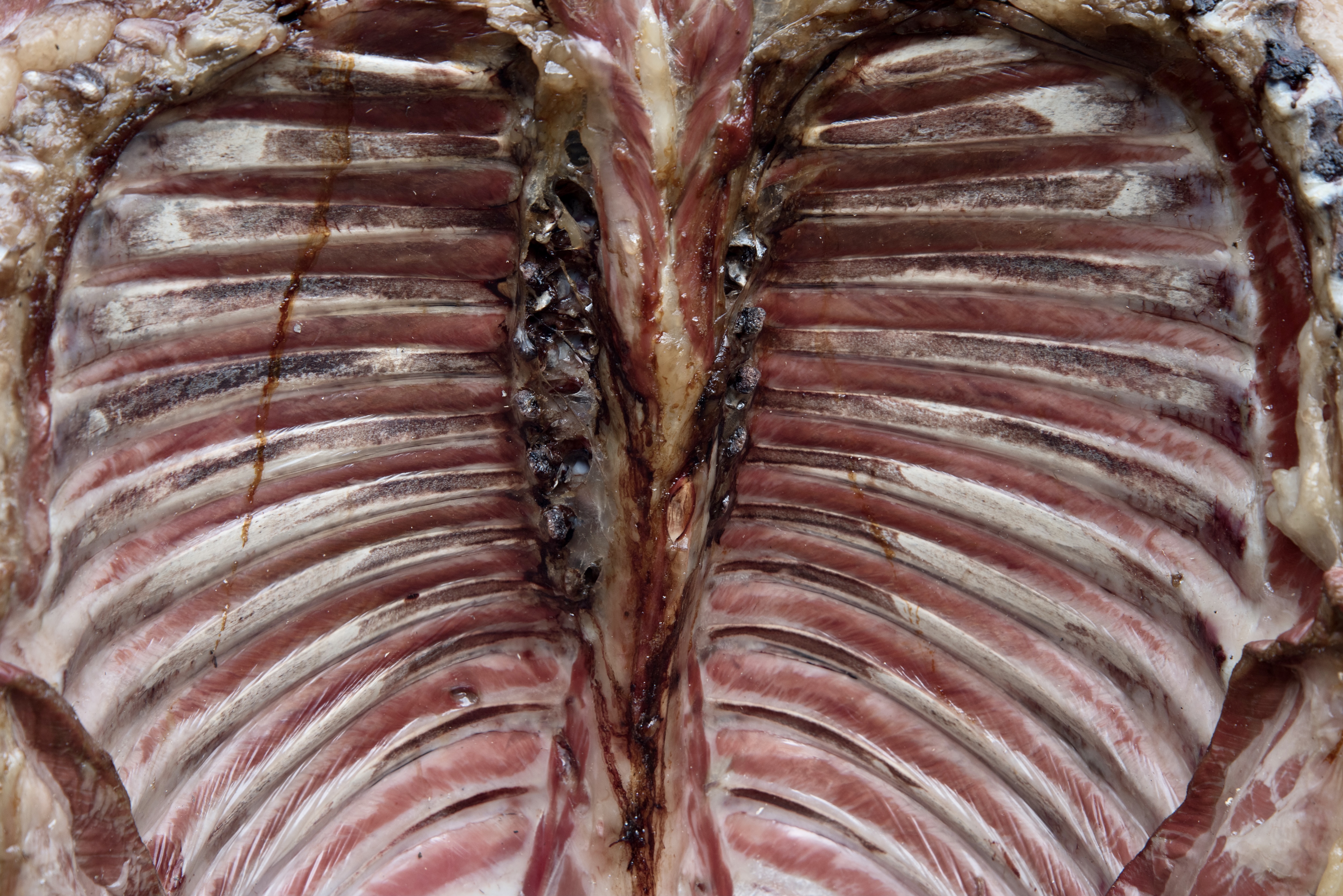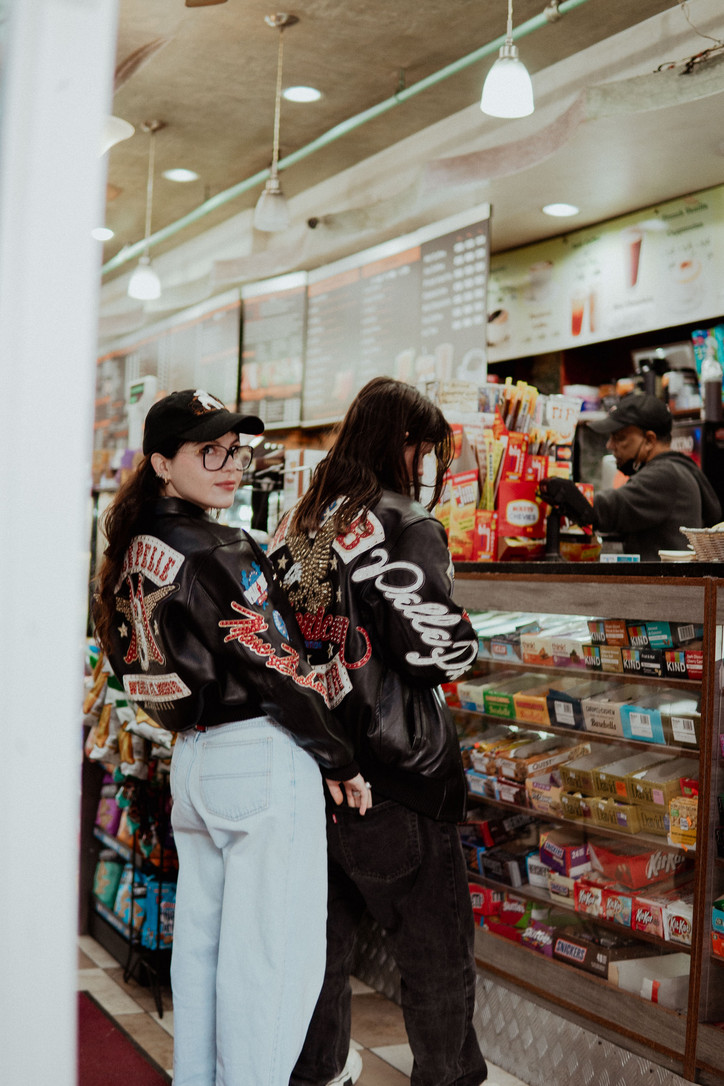Unraveling Jean-Luc Verna’s Twin DNA

On the opening night of his solo show in New York, he surprised the audience with karaoke adaptations of Funky Town by American disco-funk group Lipps Inc. and songs by the English Rock band Bauhaus. The impromptu performance marked Verna’s debut at the France-based Ceysson & Bénétière Gallery as well as his return to the stage, drawing on his 17 years of experience traveling across Europe under Gisele Vienne’s dance company.
Upon its founding in 2006, Ceysson & Bénétière dedicated its roster to the 1960’s & 70’s French art movement Supports/Surfaces, which detached the canvas from its stretchers in an attempt to critique Paris’s institutionalized art system. The ethos of Supports/Surfaces is fitting for Verna, who seems equally fascinated by the structures of culture and knowledge that support his image-making as he is with the content of the work itself. Throughout the show, images of numerous infamous figures from Michele Lamy to Siouxie Sue meld with landscape drawings, textile work, and shiny rainbow-colored stickers.
Verna’s strikingly tattooed face — evidence of a life of risk, spent in the margins — belies his calm, eloquent demeanor and the mature, thoughtful contemplation that permeates his body of work. I met with Verna over a video call from Paris in a dimly-lit New York City library one rainy Sunday to discuss his latest exhibition, his love and hate for the art world, and his plans for his next tattoo.
Hello.
Hi, how are you?
I’m good, I’m good. It’s great to talk to you. How was your time in New York?
I was cheated out of my brain. And I’m still in New York in my mind because it was a hell of a good time to be there. So I miss it already.
Well, I’ve found it quite insightful to see the exhibition. I know that the range of work spans both the breadth of your archive and mixes in new work. When did you start thinking about this show?
Well, it’s the third time I’ve exhibited in New York, but the first two times were group shows, and for a group show, the logic is really different for many reasons. So it was important for me to bring on some samples of different periods of my drawing work, and also different areas of artistry that I could provide. So, the easiest way to do that was to sing some songs.
In many ways this was really important for me, it’s my first exhibition ever with my new gallery. And it’s a big event for me. I’ve been working for 34 years with another gallery, and now it’s like our, how do you say… it was the wedding night.
Ha! Right.
It was also really nice that the public reception was really good. It was a mix of a bunch of different people, and I was doing this exactly for that. I don’t want to be a sixty-year-old artist, showing for a sixty-year-old audience.
That’s what’s been redemptive for me. There were youngsters, there were people of every age, shape, color, and gender. And it was just perfect to me.
I was told that you sang at the opening — you had a performance?
Yes, it’s a part of what I am, I’m a singer too. So it was not a gig, it was not serious, it was just something to treat — or to punish — the audience. And they quite liked it, so I was lucky.
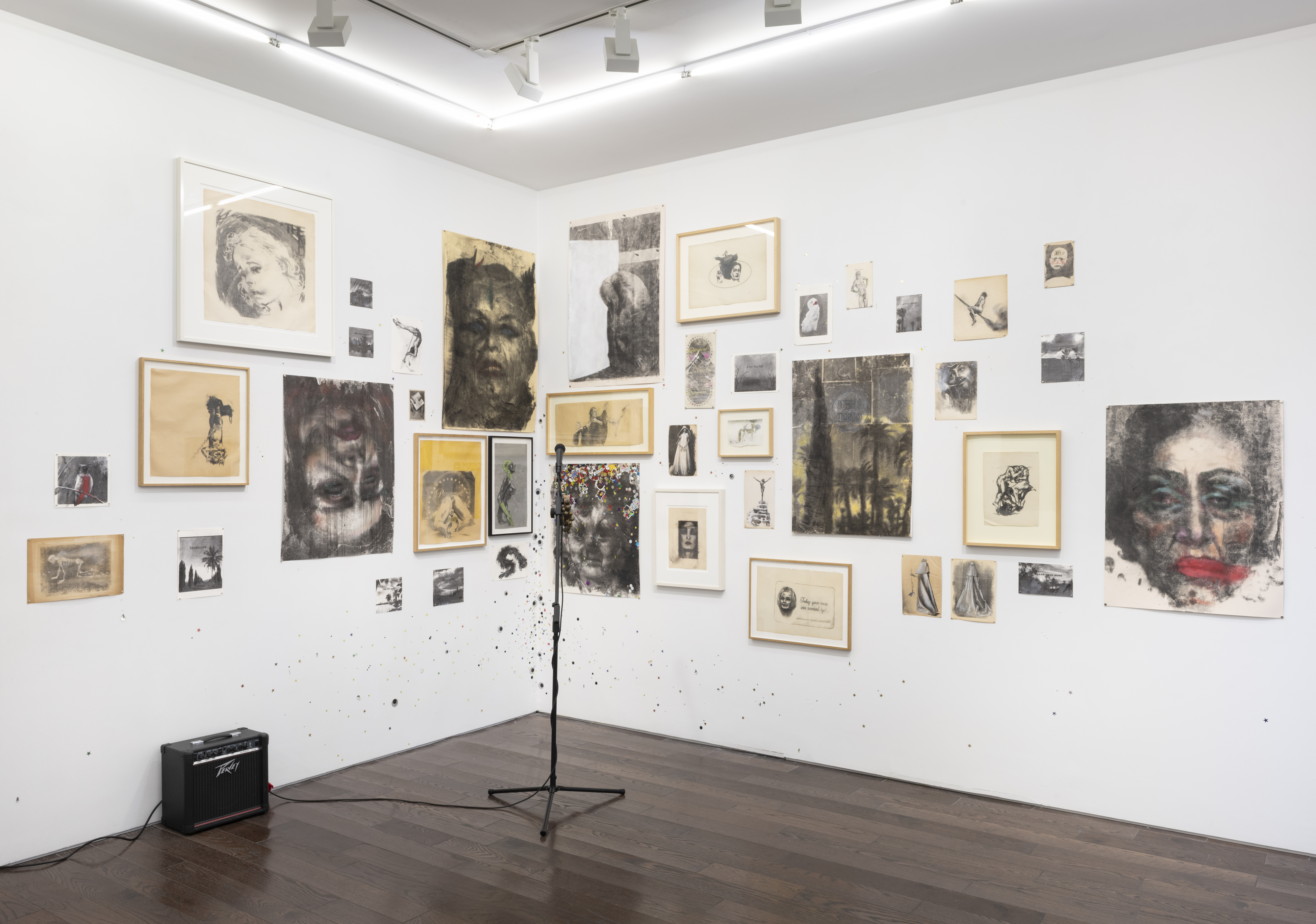

What songs did you perform?
I choose songs that I listen to when I draw, to be immersed in my process or head — or cave, or grotto, I don’t know. So I sang a little cover of Funky Town with the lyrics rewritten and I’ve made it into a very funny song about Paris.
And I’ve been covering a song from the group Bauhaus. The first song was so funny it was nice to follow with something very sad, thoughtful, and nostalgic. Because I had to show my colors, and they’re not as predictable as one could think. Just like my drawings. They may be funny, may be atrocious, may be cynical, or may be joyful…all at the same time.
I'd like to ask you about the smaller image-based drawings of landscapes with the text over them. What spurred this inclusion of landscape? Have you always been interested in this type of imagery?
No, no. In fact, it’s very recent. I hate to draw landscapes. It’s the last thing I’ve tried in my life, landscapes. Normally I find them very boring and quite unappealing to work on. But, you know, my way of choosing subjects is based on what’s not appealing to the contemporary art market. And I will add that in France, and Europe, landscape drawing is actually quite unfancy.
So as I really hate and run from all things fashionable and hashtagable, I said to myself, well, it’s doubly interesting for me to draw the subject I hate… and it’s totally suicidal in a commercial view, if you want to look at that angle.
Could you speak to the juxtaposition between the classical imagery of the landscape format and the contemporary voice of the text scrolled across them?
Well, a landscape drawing can be really old-fashioned and out of fashion. Postcards too — postcards themselves are really something that’s becoming obsolete. Just like me. Just like people. Because I’m growing old — I was born in the ‘60s — so I’m going to disappear.
Postcards are going to disappear. And I love those things because they are like old actresses that have run out of work. What could happen if I go into the dustbin or the grave, I take them out, shake them a bit and add a little makeup, and try to make them say something about now and here? Which is what I’m about as an artist.
What’s actually written on the drawings are the titles of very known classics of New Wave and Post-punk music. And, as you can see, it’s not colorful, it’s not joyful, it talks about nature but without the hashtag of being, like, ecological… being aware.
It's like a kaleidoscope view of my youth and my adulthood, and those rarely meet in real life. So this music I’m referring to is like sad or anxious music and quite fits with what I feel about nature, of course, like everyone else now, because we know… it’s the end of time.


What do you hate about the art world right now? Maybe hate is too strong of a word. What’s—
No, no, it’s never too strong. Because those things are really strong—I mean feelings must be strong. So I might start by saying that there is nothing I hate about the art world that I don’t hate about the world. I mean they’re the same – the same shit, you know.
Is there anything that you love about the art world? Or is it the same answer; that you don’t see a difference between the things that you love about the world and the things that you love about the art world?
Well, let’s say that the art world accepted me … I love it because if it was not for the art world and what it gave me, I wouldn’t be here today. It’s just that. It’s a question of being alive or dead.
I mean frankly, I couldn’t see myself making it in another part of society. These are my only skills. This is the only way I can feel useful, as a man and a citizen, and I can raise my voice, and I can sometimes be heard. I can teach, with art I can be in touch with my period, with my times. And I obviously have a tremendous luxury of spending so many hours asking myself questions…
The only thing I can do is to be as sensitive, intelligent, and skillful as I can, and maybe be joined by some valuable human beings. And that’s all. It’s a life of luxury, even when I was very poor and without a flat and without a studio. And I’m very thankful. I’m very thankful.
Aside from the pieces in the show, do you see a connection between your artistic practice and the way the practice of tattooing your body acts as a work in its own right?
Well, tattooing for me has never been an artistic thing. I began to tattoo myself when I was fifteen years old, when I was a teenage punk. And then bit by bit I tattooed myself, I asked for friends to tattoo me. And then I had a certain success, so a certain amount of money to waste on those stupidities, so I had more of them.
And then I had to deal with getting older and having my face… dropping. And then I choose to tattoo my face — so as to not see the… collapsing.
I tattoo myself a lot less now because it hurts more. I feel it too much now. So I just enhance some things on my face. And of course, I’m going to tattoo the name of my new gallery.
Oh nice, where’s that tattoo gonna be?
Oh, I don’t have a lot of room left, so it’s going to be in one of my calves.
Nice. Are you gonna draw out the font yourself?
No, I’m going to take the exact same font that they use on their letterhead. It’s going to be just perfectly that — recognizable at first glance.
That’s funny, I like that. I have one last question for you today. What does pop culture mean to you?
Well, pop culture is what saved me from myself and from my family. Once, I was getting back from school, and on the television, there was a gig of Siouxsie and the Banshees. At the time I didn't know what that was. But I was really hit hard by this vision.
After that moment at the TV, I cut my hair, I began to wear makeup every day. And I ran from my family. So pop culture is basically my first life savior, really.
I listen to music, I look at TV series every day. So pop culture is my culture. But real culture, I mean high culture, I mean book culture or museum culture, is the second loaf of bread that constitutes my sandwich. I mean, without one of them, there is no taste, and you can’t put it in your mouth. So now, I’m not a teenage prostitute, I am not a young punk rocker. I am a known artist, belonging to the MOMA in New York, and a lot of very big and very illustrious collections.
I’m just in the middle of those two points of very low culture and very high culture. And this constitutes exactly half of me, half of my aesthetic, half of my body, half of my way of talking, half of my way of being on stage. I mean, it’s really like I have twin DNA.
I was born in the museums, and I was born in the nightclubs.
Jean-Luc Verna’s « Soloshow » is open until December 9, 2023 at Ceysson & Bénétière New York.





